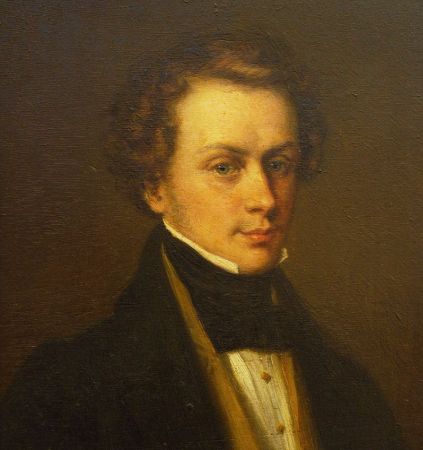The Physicist who adds new dimensions to the discovery of the human body: Christian Johann Doppler
He discovered the principle of the "Doppler Effect," which states that the frequency of a wave depends on the relative velocity of the source and the observer. Austrian mathematician and physicist Christian Johann Doppler is the third of five children of stonemason Johann Evangelist and housewife Theresia.

He was born on 29 November 1803 in Salzburg, Austria. His mother, the daughter of a middle-class comb manufacturer, had brought a substantial dowry that made their life quite comfortable.
Christian, who has a weak constitution since childhood, is sent to Salzburg Gymnasium in 1816 due to the advice of Salzburg High School mathematics teacher Simon Stampfer, who noticed his extraordinary mathematical talent, and because of his good grades in primary school. However, in 1819, his father, who planned the same profession for him, took him from school and sent him to a regular school in Linz. On the renewed recommendation of Simon Stampfer, Christian is sent to the Polytechnic Institute in Vienna; He graduated in 1825.
We know from the information in the Salzburg Gymnasium record that Doppler scored well in religion, Latin and Greek, and excelled in mathematics, geography and history. Then he studied philosophy at Salzburg High School for a year. This is followed by studies of mathematics, mechanics and astronomy at the University of Vienna, which Doppler successfully completed in 1829.
After graduating from the University of Vienna in 1829, he was appointed temporarily as an assistant to Adam Burg, professor of higher mathematics and mechanics at the Vienna Polytechnic Institute. During his assistantship, Doppler published four mathematics papers, the first of which was "A contribution to parallelism theory". Since his temporary duty ended in 1833, he applied to different universities but did not receive a positive answer.
The period between 1833 and 1835 are difficult years for Doppler. He worked for a year as an accountant in a cotton mill in Bruck an der Leitha. Upon receiving negative answers to all his academic applications, he begins to plan to immigrate to the United States. In 1835, while the full immigration preparations were completed, he was accepted as a professor of arithmetic, algebra and geometry at the Technical School in Prague, which he applied to 2 years ago.
In 1842 his most famous work “Über das Farbige Licht der Doppelsterne ve Einiger Anderer Gestirne des Himmels” (On the Colored Light of the Binary Stars and Other Stars of the Heavens) is published. Teaching at the polytechnic is very stressful. Despite this, Doppler published more than 50 papers on mathematics, physics and astronomy during this period. His weak body could not bear this burden and he fell ill in 1844; staying on sick leave for about two years.
Christian Johann Doppler first described the acoustic sensing effect, the "Doppler Effect", named after him, in 1842. The Doppler effect is defined as the observed changes in the frequency of the returning waves in the presence of relative motion between the wave source and the observer. Sound, light, etc. are emitted by the motions of the objects due to the Doppler effect. We can also describe it as the fact that energies are perceived differently by the receiver due to the change in the distance between the source and the receiver.
Doppler effect; It is an effect that can be measured with devices specially designed to measure atmospheric movements, including winds, and radiation distribution emitted from the object due to the movement of the object. Even though the source always remains the same and therefore always produces the same frequency sound, we think that the frequency has changed. This event occurs when the source or receiver, or both, are in motion relative to each other. A fixed-frequency sound source sounds higher (higher frequency) as it approaches and quieter (lower frequency) as it moves away.
Therefore, frequencies with smaller wavelengths are perceived as higher and higher frequencies are perceived as lower. This change in sound frequency due to motion is called Doppler shift. Based on this basis, the frequency changes reflected from the shaped elements in the blood flowing in the veins can be detected and its properties such as direction and velocity can be examined.
He returns to his post at the Prague Polytechnic in 1846; however, due to some problems, he starts looking for a new job. He became known for his work on the Doppler effect in 1842, so it doesn't take long. In 1847, he joined the Selmecbánya Academy of Mines and Forests in Hungary as a professor of mathematics, physics and mechanics. However, his tenure was interrupted by the revolution that broke out in 1848. Doppler fled to Vienna in 1849, and on January 17, 1850, by imperial decree, he was appointed Director of the Institute for Experimental Physics at the University of Vienna. This time, his duty is left unfinished due to illness; He goes on sick leave, never to return.
Doppler's health began to deteriorate in 1849. In November 1852 he travels to Venice, hoping the warmer climate will help him recover. In March 1853 his condition worsened; He died in Venice on March 17, 1853, at the age of 49 from lung disease, and was buried there.
Usage Areas of Doppler Effect According to Wave Movements
US astronomer Edwin Hubble discovers that the universe is expanding as a result of the Doppler effect.
The Doppler effect has important applications in astronomy and space technology: sirens, astronomy, radars, medical imaging, and blood flow management, flow management, velocity profile management, satellite communications, sound, and vibration measurement.
